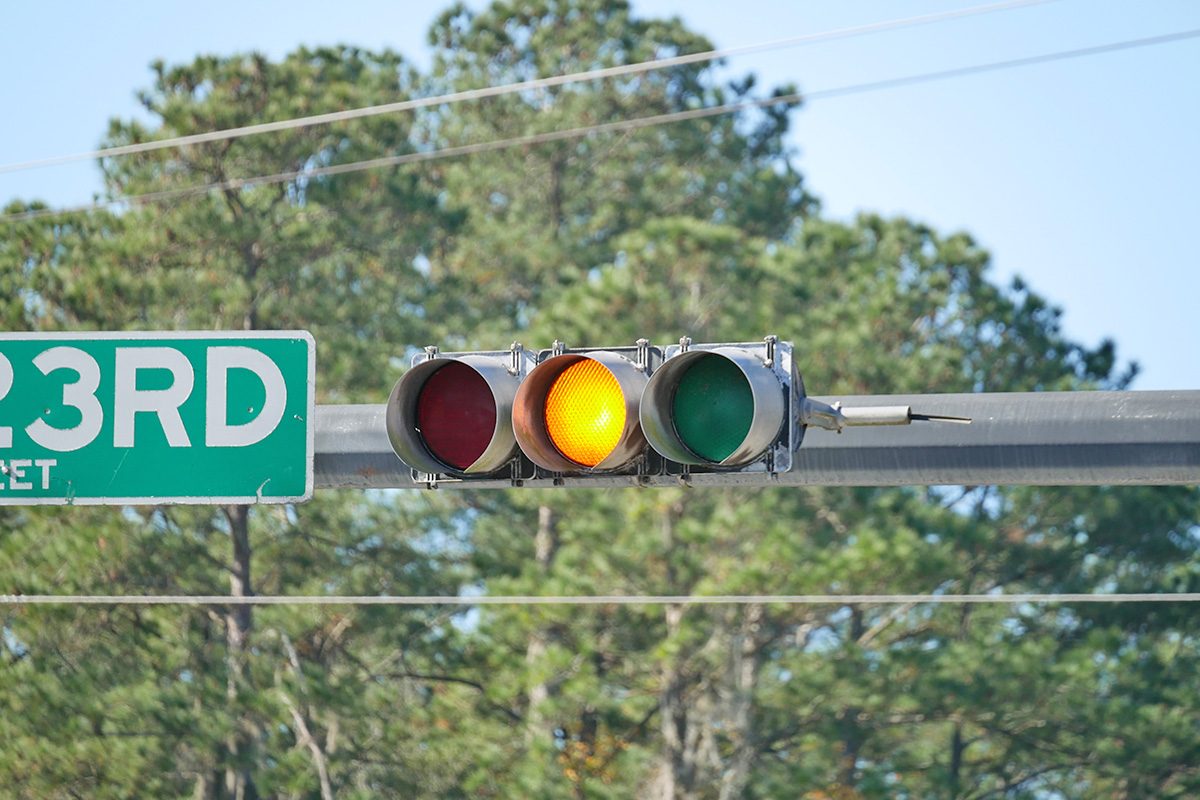Be prepared next time you're entering an intersection.

Is Running a Yellow Light Against the Law? What Drivers Should Know

The traffic light shifts to yellow just as you approach the intersection. For a second, everything feels uncertain. Your foot hovers between the gas and the brake. The car behind you is close. You’re not sure if stopping makes sense—or if continuing will get you in trouble. It’s a moment nearly every driver has faced. But what are the actual rules when the light turns yellow?
On This Page
What a Yellow Light Actually Means

Yellow lights aren’t as clear-cut as “green means go” and “red means stop.” They signal that red is coming, but that doesn’t automatically make it illegal to enter the intersection.
In many places, it’s legal to go through a yellow light—if it’s safest to do so. The California Driver Handbook explains that drivers should stop if they can safely do so, but if not, they can proceed with caution. That’s generally how it works in other states, too. Yellow isn’t a hard stop, but it is a warning.
Article 38.1 gives even more specific direction: if your vehicle has already crossed the stop line when the light turns yellow, you’re allowed to keep going. If you haven’t crossed yet and can stop safely, that’s what you’re expected to do.
Still, just because something isn’t always illegal doesn’t mean it’s always safe. In a 2015 survey from the National Highway Traffic Safety Administration, 40% of drivers admitted they sometimes entered intersections just as the light turned from yellow to red. Another 11% said they did this often. That kind of behavior starts to push into risky territory. In the same survey, 10% said they sometimes cut in front of other drivers, and 2% admitted they often did.
So where does enforcement come in? If you blow through a yellow light that turns red while you’re in the middle of the intersection, a police officer could decide that you ran a red. It depends on the timing, your speed, and how close you were to the intersection when the light changed. Traffic cameras work similarly. If the light turns red before your front tires enter the intersection, it’s likely going to count as a violation.
Why Yellow Light Timing Matters
Yellow lights don’t last the same amount of time everywhere. Some give you enough room to react. Others flip to red so fast that even careful drivers can get caught in the middle.
According to the Insurance Institute for Highway Safety, adding just one second to yellow lights in Philadelphia reduced red light running by 36%. Most people aren’t trying to break the law—they just misread the timing. A slightly longer yellow gives drivers a better chance to stop or pass safely.
The Institute of Transportation Engineers has suggested standards, but not all cities use them. That’s why some intersections feel rushed, even if you’re doing everything right.
Is It Illegal to Enter an Intersection During a Yellow Light?
If you’re ever in doubt, it helps to think about the purpose of the yellow light. It’s there to give you time to stop. If you’re already too close to the intersection to stop without slamming the brakes or getting rear-ended, the expectation is that you’ll keep going. But if you’ve got space and time, stopping is usually the better call.
Yellow lights aren’t a free pass, but they’re not usually illegal either. It all depends on how fast you’re going, how close you are, and whether you can stop safely. Every intersection is different, and the rules only go so far. A yellow light means you have to make a quick decision and whether it’s the right one depends more on your timing than the law.
Ultimately, every country and state has unique driving laws, so verify the laws where you’re driving.
Related
- Do You Know What That Little Button on Your Seat Belt Is For?
- What Those Lines on Your Backup Camera Really Tell You
- Here’s What The Small Panel On Your Car’s Front Bumper Is For




















